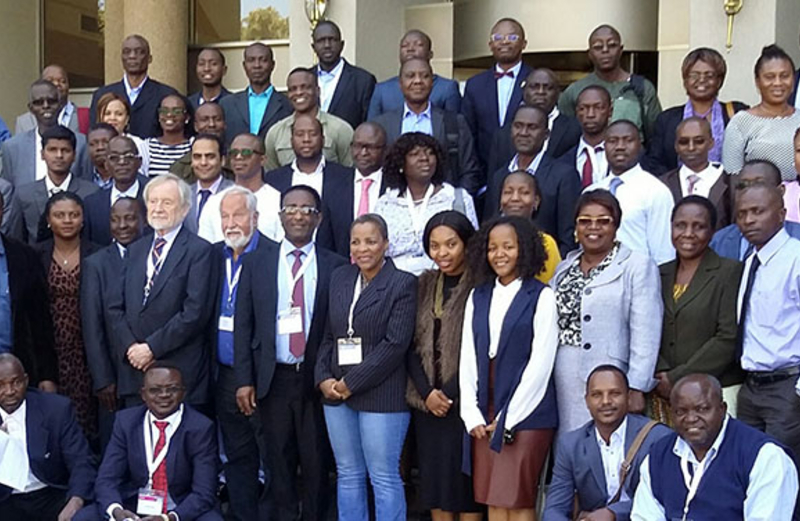High-Level Indicators key to tracking, measuring impact of STISA

African countries have urged the African Union (AU) and NEPAD Agency to lead the development of a unique set of High-Level Indicators that can be used to track the implementation, and measure the impact of the Science Technology and Innovation Strategy for Africa (STISA) in 2024. This came to light during the NEPAD Agency Science Technology and Innovation (STI) Continental data validation workshop in Windhoek, Namibia.
STISA High-Level Indicators shall be a standard framework allowing AU Member States to report on their STI work at national level and also make it possible for Regional Economic Communities (RECs) to synthesize and consolidate STI reports at regional level. This will be a Continental Framework to galvanize the impact of STISA using a set of High-Level Indicators that can easily be reported upon and credit apportioned where it is due – which is the STISA.
African Union Commission (AUC) Director of the African Observatory for STI, Dr Phillipe Kuhutama Mawoko said this workshop provides the necessary tools to better contribute to solving African problems using quality STI data. He said it is only quality data that will give credibility to our results and help decision makers to make informed decisions. Hence, it is important to provide relevant information and use STI data to create employment for the many unemployed youths on the continent.
“We have already gone a long way in implementing STISA, but there is still a long way to go and more needs to be done,” Dr Mawoko emphasized.
Representing Southern African Development Community (SADC), Senior Technical Advisor on STI, Ms Anneline Morgan stated that the journey of African Science, Technology and Innovation Indicators (ASTII) started with only 19 countries but the number has now risen to 40 countries in Africa. She echoed Dr Mawoko’s words that we have come a long way to reach this stage but emphasized that the real work is also ahead of us.
“We have to instil a culture of measurement and encourage policy learning in Africa to improve national systems of innovation,” Ms Morgan said.
She further stated that this workshop is not just an avenue for sharing STI data that has been collected, but it is aimed at adding understanding to the collected data and use it to tell a story of STI in policy implementation at local level and help to increase investment in science systems.
NEPAD Agency representatives, Dr Tichaona Mangwende and Martin Bwalya emphasized the role of NEPAD Agency in the African development equation. Dr Mangwende said that we have to attach importance and relevance to the collected data to make it more meaningful. He said this data has to be delivered to the right people in a strategic and timely manner to ensure maximum impact. Zooming out and taking a bird’s view, Mr Bwalya reminded delegates that the role of NEPAD Agency is to create and manage knowledge and bring this knowledge to the development equation. Therefore, during and after this workshop we must continuously ask ourselves one important question – how will this data contribute to the development of Africa and particularly the unique vision of the AU Agenda 2063.
The workshop was officially opened by Loide Uahengo, Senior Programme Officer at the National Commission on Research Science and Technology (NCRST) of Namibia. Development partners were also represented by Dr Ellie Osir from International Development Research Centre (IDRC). Dr Osir re-affirmed IDRC’s commitment to supporting the work of the NEPAD Agency on STI in Africa.


